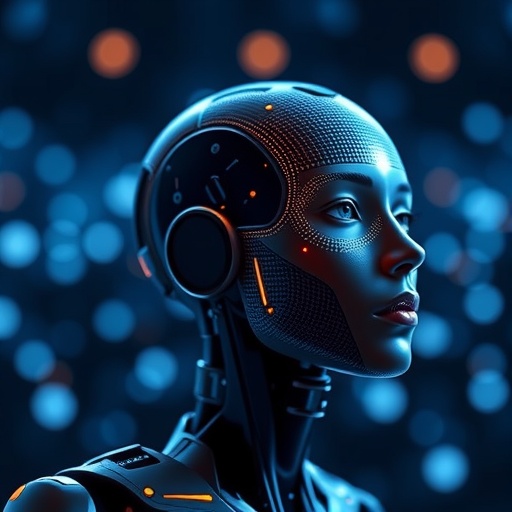AI-Generated Voices: A New Era of Realism in Voice Synthesis
In recent years, the rapid advancement of artificial intelligence (AI) has transformed many sectors, and voice synthesis is no exception. A groundbreaking study conducted by researchers at Queen Mary University of London reveals that the capability of AI to generate voices has now reached a critical juncture. Participants in the study found it increasingly challenging to differentiate between human voices and those generated by AI technology, specifically voice clones or deepfakes. While the perception of AI-generated speech may still carry stigma as being “fake” or unconvincing, the evidence from this research suggests that the technology has evolved significantly.
The study employed sophisticated AI voice synthesis tools to analyze and compare real human voices against two distinct forms of synthetic voices. One variant was crafted by cloning actual recordings of human voices, while the other was generated from a large model devoid of a specific human counterpart. This innovative approach enabled researchers to shed light on the perceived realism and authenticity of artificial voices as evaluated by human participants.
Findings from the study indicated that not only can voice clones sound indistinguishable from genuine human voices, but they also exhibit intriguing characteristics in terms of perceived dominance and trustworthiness. Both categories of AI-generated voices were rated as more dominant than their human counterparts, and some were even deemed more trustworthy. This raises significant questions about our innate responses to voice and authority, particularly in contexts where trust is crucial, such as customer service and political communications.
Dr. Nadine Lavan, a Senior Lecturer in Psychology at Queen Mary University of London and one of the co-leaders of the study, emphasized the ubiquity of AI-generated voices in our daily lives. Whether through virtual assistants like Alexa and Siri or automated customer service interactions, individuals frequently engage with AI voices. Despite prior shortcomings in emulating the nuances of human speech, this new research signals that we have crossed a threshold where AI speech now feels remarkably natural and convincing.
The implications of such advancements in voice synthesis technology are immense and multifaceted. The ease with which researchers were able to develop voice clones raises pressing ethical questions surrounding consent, ownership, and the potential for misuse. With minimal expertise and merely a few minutes of voice recording, individuals can now create deepfake voices that not only mirror but could potentially exploit someone’s identity. This troubling capacity illuminates the dual-edged sword of technological progress; while AI can enhance user experiences and facilitate disabled access to important services, it harbors significant risks relating to issues like misinformation, fraud, and impersonation.
Technology has always been a double-edged sword, and the newfound ability to generate hyper-realistic voices at scale opens exciting avenues for enhancing accessibility, education, and communication. The potential applications of this technology can vastly improve the user experience, tailoring bespoke synthetic voices to fit individual needs. For instance, such advancements could facilitate personalized learning experiences for students, creating virtual educators who can deliver instruction in a manner that resonates with diverse learning styles and preferences.
Despite the advancements detailed in the study, researchers did not observe what is referred to as the “hyperrealism effect.” Previous studies have demonstrated that AI-generated images have often been identified as human, surpassing human photographs in various evaluations. This contrast prompts further exploration into the particularities that differentiate voice from visual representations in terms of their perceived realism, and why AI voice technology has not yet achieved a similar status in the same realm.
The rapid pace at which voice synthesis technology has evolved also necessitates urgent dialogue about its implications for society. As AI-generated voices become increasingly realistic, public awareness and understanding of these advancements become critical. Individuals must develop the discernment required to navigate a future where voice synthesis may masquerade as authentic human communication. This emphasizes the need for consumers and businesses alike to adapt to evolving technologies while remaining vigilant of the ethical concerns that accompany their use.
As we stand on the precipice of a new era of AI-generated voices, it is essential to grasp both the immense opportunities and the significant challenges they present. Encouragingly, the research from Queen Mary University of London highlights the sophistication now achievable in AI voice technology. Still, it also urges stakeholders to proceed carefully, emphasizing the importance of ongoing conversations about ethical standards, consent, and the societal implications of these remarkable advancements.
The voices we hear in our daily lives—whether through a personal assistant or in the media—are likely to become increasingly lifelike and nuanced, reshaping our understanding of authenticity in communication. As technology continues to evolve, the boundaries between human and machine voices may blur, requiring us to continuously update our perceptions, understandings, and regulations surrounding this fascinating domain of artificial intelligence.
As generative AI technologies advance, our collective relationship with voice and communication will ultimately be redefined. Therefore, in the coming years, a careful balance will need to be struck, recognizing the benefits of AI-generated voices while ensuring ethical frameworks are in place to mitigate the risks of misuse. The future holds exciting challenges, but with them come the promises of unprecedented opportunities for creativity, communication, and personalized digital experiences.
Subject of Research: The ability of AI-generated voices to mimic human voices indistinguishably
Article Title: Voice clones sound realistic but not (yet) hyperrealistic
News Publication Date: 24-Sep-2025
Web References: DOI Link
References: None available
Image Credits: None available
Keywords
Generative AI, Voice, Artificial Intelligence, Deepfake Technology, Voice Cloning, Human-Machine Interaction, AI Ethics, Communication Technology
Tags: advancements in artificial intelligenceAI voice synthesis technologychallenges in voice differentiationdeepfake voice technologyfuture of AI in communicationhuman speech vs AI speechindistinguishable AI-generated voicesperceptions of AI-generated speechQueen Mary University studyrealism in voice cloningsynthetic voice characteristicsvoice synthesis research findings





